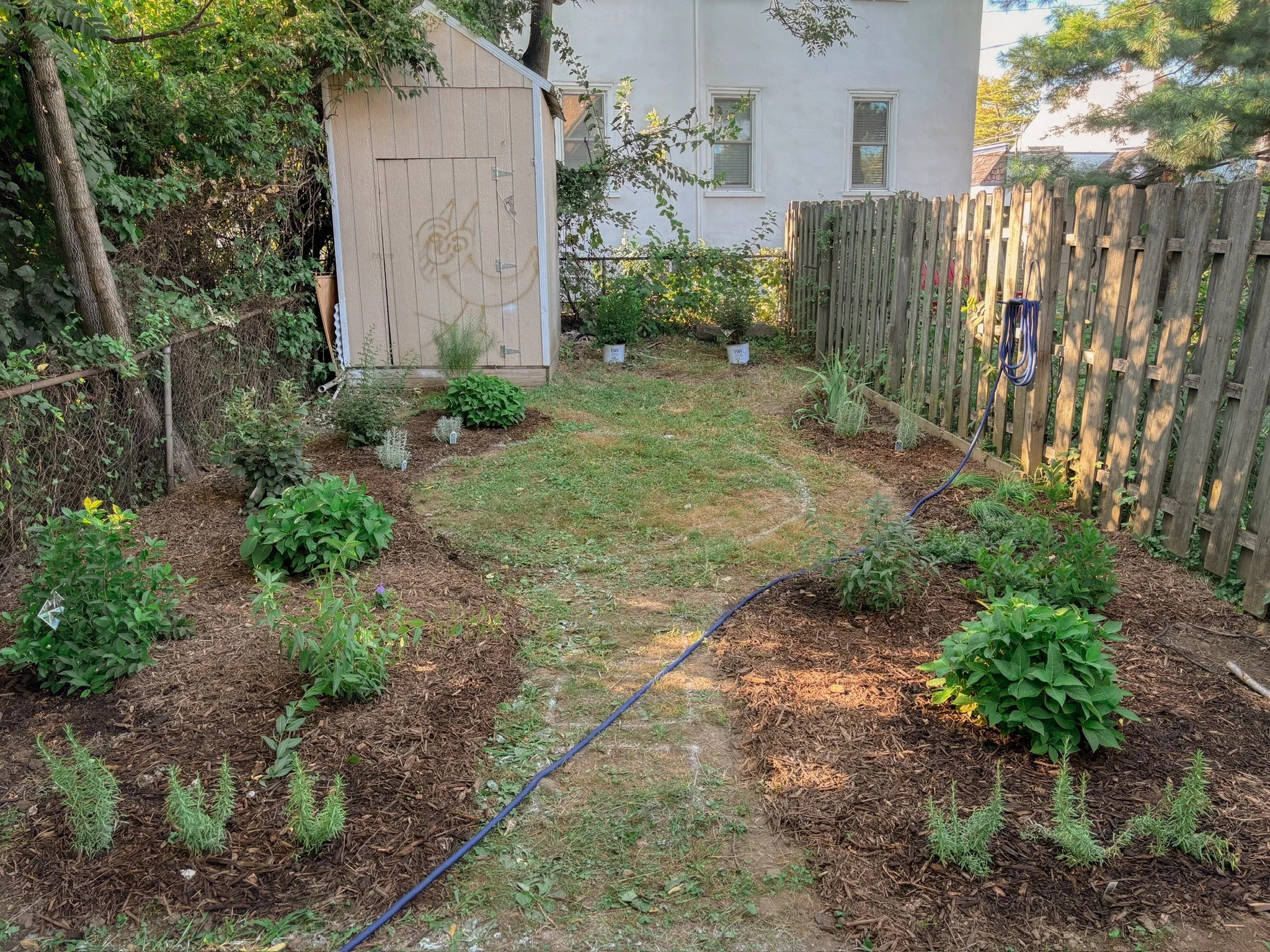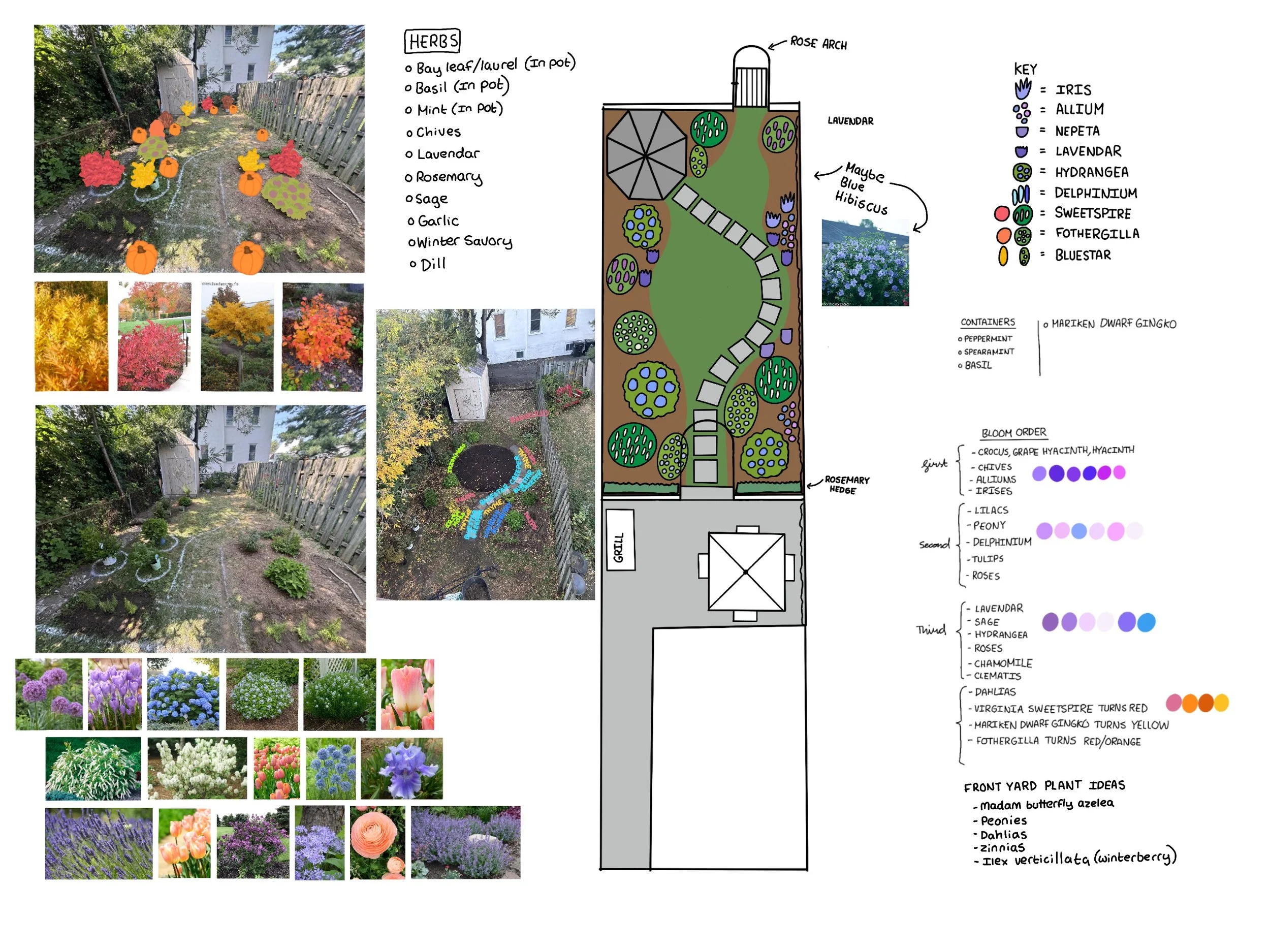GARDEN 001 | My Garden & How I Designed It
Although I try to keep it low maintenance, weeding is a part of any gardening journey.
Dear You,
I’m so glad you’ve decided to read today’s letter. I’m always eager to share about my personal gardening journey (to which any of my friends will gladly attest), and I hope you’ll come away with something you can apply to your own home.
Allow me to introduce you to my garden. Although it may not look like much just yet, I’m incredibly proud of my handiwork. I believe that the hours of planning, research, and work that went into its design will, like a fine wine, age and mature with color and character.
From Chaos to Cultivation
Evan (my husband) and I purchased our home in the summer of 2024 with the intent of completing renovations and moving in by fall. However, much like any home renovation, it took longer than expected as we stripped away years of duct tape and bubblegum repairs, poorly thought-out remodels and… roaches. Our timeline shifted. I started a new job, Evan’s workload increased, and our wedding day approached quickly. The renovation had to be put on hold.
Still, despite the delay indoors, I was determined to start building something beautiful outside. I knew if I could get the garden in the ground before we moved in, it would have a chance to settle in and begin filling out by the time we were ready to enjoy it.
Understanding the Space
As fun as it is to dream about gardens and pin inspiration photos, you really can’t design a small garden until you’ve seen the space and evaluated your microclimate. A microclimate is your garden’s unique environmental profile. It includes everything from light levels and soil type to drainage patterns and growing history. I may need to write an entire letter breaking those elements down further, but for now, I’ll just summarize some of the main factors I considered in designing our garden.
Our garden is narrow. It slopes gently toward the house, and there's an absurdly large shed in the back left corner. Our house casts quite a bit of shade, and overall, the garden contains all three shade levels:
Full sun in the back corner near the shed and along the fence line
Full shade near the house
Partial shade in the middle, thanks to our neighbor’s trees and the shadow of our home
The Garden shortly after the initial planting, I used sports marking paint to map out the beds.
Design-wise, it’s both a challenge and a blessing. I have the opportunity to grow a wide variety of plants, but I’m limited in repeating them to maintain a cohesive design.
Designing with Intention
Once I had a clear understanding of our microclimate, I had to assess our values and what we needed from the garden. This is especially important in small spaces. Back at my parents’ house, I had a large vegetable garden tucked into a corner of their property. Now, our entire yard is only slightly larger than that one dedicated corner, which means I’m trying to achieve both beauty and function in the same space. Every plant now needed to be thoughtfully selected to contribute both to the landscape and to our kitchen.
Evan and I both love spending time with the people we care about. He enjoys cooking and grilling; I love baking and hosting. Naturally, we wanted a space for outdoor entertaining. But I quickly realized that large-scale vegetable gardening wasn’t practical. Most of the vegetables I like need full sun and take up significant space. So, I decided to focus primarily on herbs.
What We Chose to Grow
Fresh herbs are expensive to buy, challenging to find, but are incredibly versatile. As a passionate tea drinker, I loved the idea of growing herbs that could be used both in the kitchen and in my teapot. I still wanted to grow some vegetables, but only those that truly felt worth the space.
Take potatoes, for example. They use a lot of space, and while I do love them, a store-bought potato tastes pretty similar to a homegrown one. The same goes for squash. In southeastern Pennsylvania, we’re lucky to have access to amazing fall produce from local farmers. But tomatoes? A freshly picked, vine-ripened tomato is an entirely different experience. I knew I had to grow my own.
Of course, I also wanted ornamental plants—something to bring beauty and texture throughout the seasons. I prioritized native plants to support local pollinators, but I wanted varieties with interest across at least two seasons. For instance, a spring-blooming shrub that also offers bold fall color. And as much as I value natives, my garden wouldn’t feel like my own without a few hydrangeas.
The Plant List
After thumbing through garden books, scrolling Pinterest, and researching how plants change throughout the year, I landed on the following:
Ornamentals
Hydrangeas
Alliums
Tulips
Ranunculus
Irish Moss
Forget-Me-Nots
Balloon Flowers
A pink hydrangea blooms in the garden, framed by a terracotta planter of creeping thyme.
Ornamental Natives
Witch-alder (Fothergilla gardenii)
Bluestar (Amsonia tabernaemontana)
Sweetspire (Itea virginica)
Virginia Sweetspire blooms in the garden in late spring.
Herbs
Chamomile
Dill
Lavender
Rosemary
Thyme
Echinacea
Basil (Indoors)
Curry (Indoors)
Sage
Bay Leaf
Food Crops
Garlic
Tomatoes
Onions
Sketching It to Life
To visualize the design, I uploaded images of our yard into a drawing app and sketched directly over them, layering in ideas for plants, bed shapes, and seasonal color changes. I appreciate tools that allow for flexibility and creativity, helping me picture how the garden will evolve over time.
My garden design plan, listing all of the plants I was considering, and how their colors evolve through the seasons.
Bringing the Garden to Life
Once I had a plan I felt good about, I began purchasing plants and laying them out in the garden to see how they looked once placed in space. Then after shifting, and relocating a few things we began digging them in, bringing the design to life.
If you’re planning your own garden at home, I encourage you to get to know your microclimate, think through your values and goals, and choose plants that will bring joy through multiple seasons.
I wish you all the best in whatever stage of gardening you find yourself, whether you're just beginning or already well underway.
Sincerely,
The Grower





